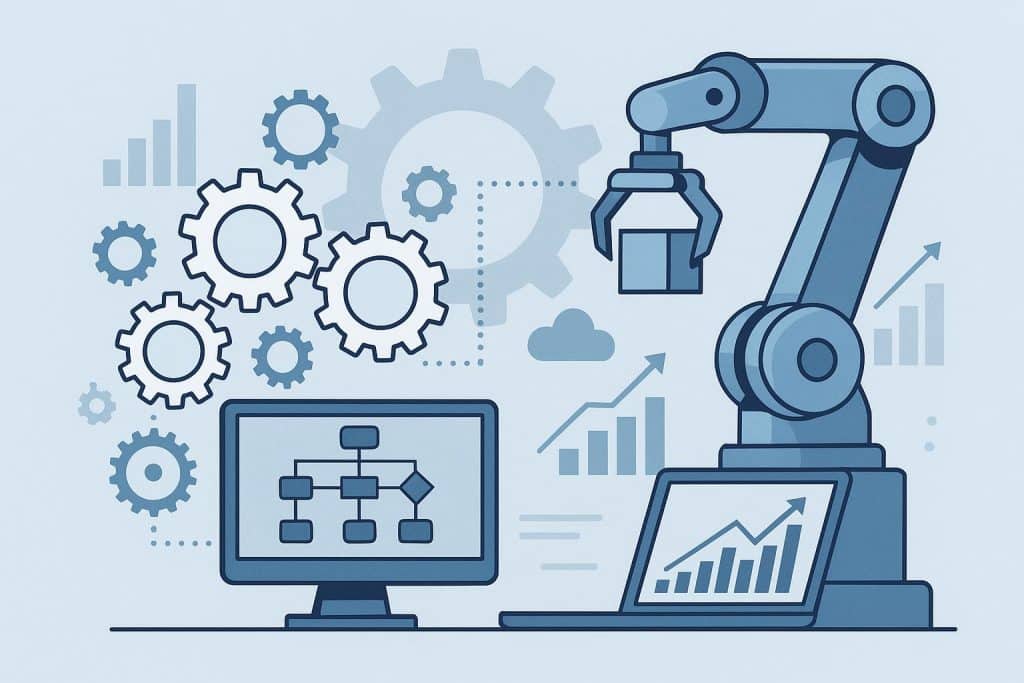Automation solutions are rapidly changing the way businesses operate across industries. From manufacturing and logistics to customer service and data management, automation streamlines processes, reduces errors, and enhances productivity. By integrating advanced technologies such as robotics, artificial intelligence, and software-driven workflows, companies can optimize performance while focusing on strategic growth initiatives. Understanding the benefits, types, and implementation strategies for automation solutions is crucial for organizations looking to remain competitive in a rapidly evolving market.
Key Types of Automation Solutions
Automation solutions come in many forms, each tailored to address specific business challenges. Robotic process automation (RPA) is widely used for repetitive, rule-based tasks such as data entry, invoice processing, and report generation. By automating these tasks, businesses can reduce human error, improve efficiency, and free employees to focus on higher-value activities.
Industrial automation solutions leverage machinery, robotics, and control systems to optimize manufacturing processes. These systems can handle complex production sequences, monitor quality, and maintain consistency at scale. Similarly, warehouse automation solutions integrate conveyor systems, automated storage, and retrieval systems to streamline logistics and inventory management, reducing operational costs and turnaround times.
Software-driven automation solutions are also increasingly important. Customer relationship management (CRM) platforms, marketing automation tools, and workflow management systems can automatically track customer interactions, schedule communications, and coordinate internal operations. These solutions improve responsiveness, enhance customer experiences, and ensure consistent execution across business functions. Understanding which automation solutions best fit a business’s needs is critical for maximizing efficiency and return on investment.
Benefits of Implementing Automation Solutions
The advantages of automation solutions extend beyond simple task completion. One of the most significant benefits is increased productivity. Automation reduces the time and effort required to perform routine or complex tasks, allowing businesses to operate more efficiently. By minimizing manual intervention, companies can achieve faster turnaround times and higher output without increasing labor costs.
Accuracy and consistency are also enhanced through automation. Human error, which can lead to delays, rework, or compliance issues, is minimized when processes are executed by automated systems. This reliability is especially important in industries where precision is critical, such as finance, manufacturing, and healthcare.
Cost savings represent another compelling benefit. While initial investment in automation solutions may be substantial, the long-term reduction in labor, material waste, and operational inefficiencies often results in a positive financial impact. Businesses can also scale more effectively, managing increased workloads without proportionally increasing staffing levels. Beyond operational gains, automation solutions contribute to improved employee satisfaction by reducing repetitive work and enabling staff to focus on more engaging, strategic responsibilities.
Implementing Automation Solutions Effectively
Successful implementation of automation solutions requires careful planning and a clear understanding of organizational needs. The first step involves assessing current workflows and identifying processes that are repetitive, time-consuming, or prone to error. Evaluating these areas helps determine which automation solutions will provide the greatest impact.
Selecting the right technology is essential. Organizations should consider factors such as scalability, integration capabilities, ease of use, and ongoing support. Involving stakeholders from various departments ensures that the chosen solutions align with business objectives and operational requirements. Employee training and change management are also crucial. Staff must understand how to interact with automated systems, interpret outputs, and maintain oversight to prevent issues from going unnoticed.
Monitoring and continuous improvement are key components of effective automation. Performance metrics should be established to measure efficiency gains, error reduction, and overall return on investment. Regular reviews allow businesses to refine processes, optimize system configurations, and explore new automation opportunities. A strategic approach ensures that automation solutions evolve with the organization, maximizing benefits over time.
Future Trends in Automation Solutions
The future of automation solutions is closely tied to emerging technologies and evolving business demands. Artificial intelligence and machine learning are increasingly integrated into automated systems, enabling predictive analytics, adaptive decision-making, and process optimization. These advancements allow businesses to not only automate repetitive tasks but also improve strategic planning and responsiveness.
Cloud-based automation solutions are becoming more prevalent, offering flexibility, scalability, and remote accessibility. Businesses can deploy and manage automated workflows without extensive on-site infrastructure, reducing costs and simplifying updates. Integration of Internet of Things (IoT) devices further enhances automation capabilities by providing real-time data for monitoring, control, and analysis across operations.
As organizations continue to prioritize efficiency, sustainability, and digital transformation, automation solutions will play an essential role in achieving these objectives. Companies that embrace innovative automation strategies are likely to gain a competitive edge, improve operational resilience, and create value for both employees and customers.
Angela Spearman is a journalist at EzineMark who enjoys writing about the latest trending technology and business news.
